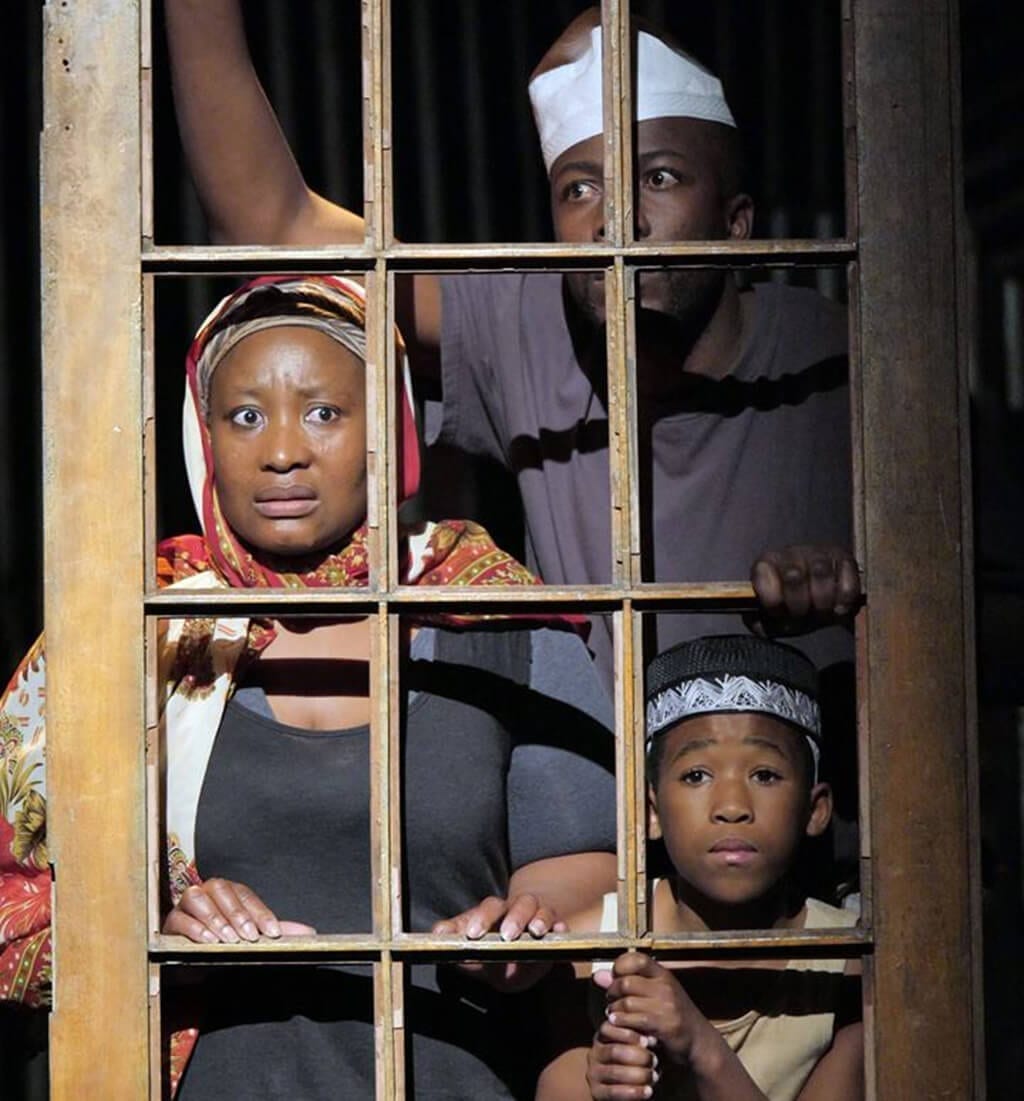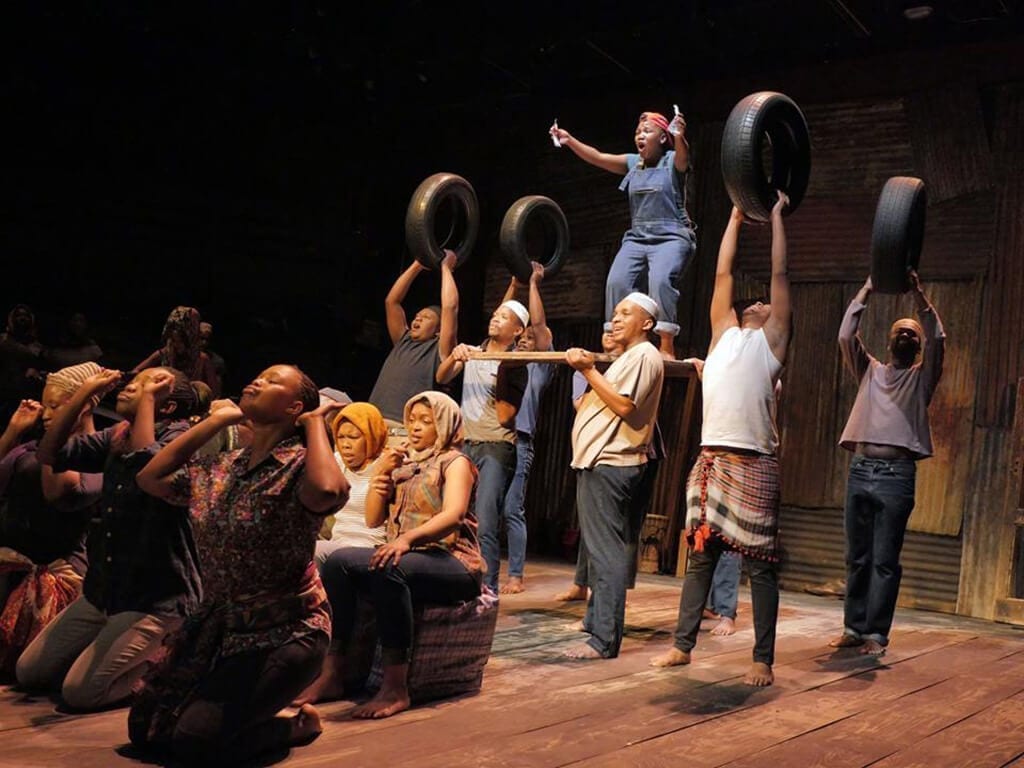South African theatre group, Isango Ensemble, brings Jonny Steinberg’s novel to the stage in an unusual and energetic adaptation.
A Man of Good Hope begins when a young boy, Asad Abdullahi, becomes one of the thousands of refugees forced to leave Somalia when civil war breaks out in 1991. The story follows Asad as he grows up, travelling first to Kenya and Ethiopia before making the long, expensive and dangerous journey to South Africa. Asad’s journey is filled with violence and xenophobia, but also friendship and care as Asad enters into the migrant’s world of complex alliances and adopted families. A key theme running throughout is Somalia’s clan structure, and how having the right name can mean the difference between a free meal or a beating for Asad even when he is far from Somalia itself.
The play begins with an explosive marimbas overture played by the cast and conducted by Isango’s co-Music Director Mandisi Dyantyis. Simply watching Dyantyis’ elegant conducting as the drummers jump from instrument to instrument is a wonderful experience, and sets the mood up nicely for the rest of the play.
This production of Steinberg’s book is an eclectic musical, with an unusual range of music styles from drumming sequences, to comedic musical numbers, to moments of operatic singing. The excellent 24-strong cast performs these, and the lively dance sequences, without pretention or over sentimentality.
The biggest weakness of this production is the story itself. Not that Asad’s tale lacks meaning or emotion- far from it- but the nature of his journey means that very few of the people he meets along the way are around long enough for an audience to develop any sense of their character. It also means that between the musical numbers, the play is largely told by narration which begins to feel repetitive by the second act. Overall there is a sense that the play would go from being good to excellent if it was edited down and tightened slightly.
However this is still very much a play worth seeing. The entire ensemble gives an excellent high-energy performance, especially the four actors who play Asad as he grows from boy to man. There are some mesmerizing moments of unaccompanied singing and a particular highlight comes at the end of the first act when the audience is taken through the music of the different African countries that Asad travels through.
Most of all this production leaves the audience with a fascinating introduction to some of the complexities of the recent history and experiences of those displaced by the Somali Civil War. It also gives a wonderfully sensitive yet pragmatic account of what it is like, emotionally and physically, to be a migrant in the late twentieth and early twenty-first century.




